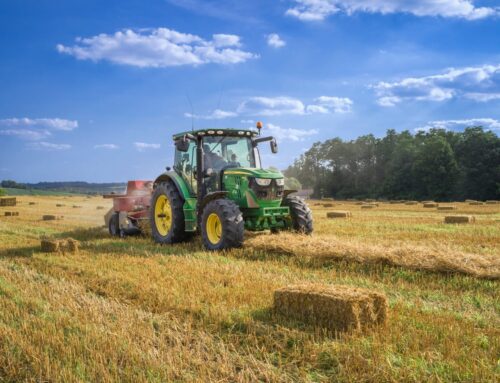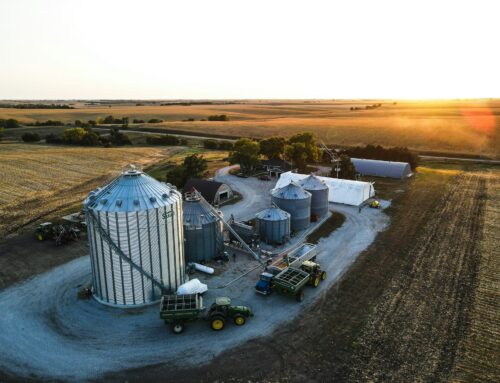View/Download this article in PDF format.
“Shallow loss” programs are a luxury that would be the envy of any other industry. They are market- and trade-distorting entitlement programs designed to make Washington responsible for ensuring profits of well-off agricultural businesses. Shallow loss programs are designed to sit on top of crop insurance, a highly subsidized program that already covers crop revenue losses of as little as 15 percent. These programs ensure that farm businesses receive taxpayer checks if their income dips as little as ten percent or even five percent, not the catastrophic losses from flooding and droughts that made headlines in 2012. And this “loss” isn’t just in crops, it is also if commodity prices drop. No other industry would dare ask for a free (or nearly free) cash guarantee during a year with projected record profits of $128 billion, but agriculture is not any other industry.
In addition to transferring farm business risks onto the backs of taxpayers, shallow loss programs also create numerous unintended consequences. Since so few strings (if any) are attached to these programs, producers are encouraged to plant crops on acres that are more likely to have crop failures, like native grassland, wetlands, and highly erodible farmland. And with no enforceable limits on the amount of subsidies any one farm business can receive, the largest agribusinesses reap the most benefits. One of the most problematic new shallow loss programs (and potentially the most expensive) proposed during the 2012 and 2013 farm bill debates is the Supplemental Coverage Option (SCO). This fact sheet describes SCO in depth and stresses the dangerous precedent it sets for the future of agriculture policy.
History of Shallow Loss Programs
The first shallow loss programs to be written into law include the Supplemental Revenue Assistance Payments (SURE) and Average Crop Revenue Election (ACRE) programs. Unlike traditional farm subsidy payments, they were included in the 2008 farm bill to cover so-called systemic risks (several years of low prices or widespread disasters). Even though ACRE and SURE offered lucrative subsidies, they were so complex that farmers and lawmakers alike viewed them as failures. Nonetheless, they provided the foundation for a plethora of new and even more complicated shallow loss proposals to be introduced during the 2012 farm bill debate, including SCO. Due to fiscal concerns, the 2012 farm bill debate bled into 2013 since a one-year extension of current law was passed. Aside from SCO, the 2013 farm bills include additional shallow loss entitlements such as the Senate’s Agriculture Risk Coverage (ARC), House Agriculture Committee’s Revenue Loss Coverage (RLC), and a dedicated program solely for upland cotton in both bills called Stacked Income Protection Plan (STAX).
Supplemental Coverage Option (SCO) Explained
SCO has great potential to not only shift risks onto the backs of taxpayers, but also to add billions more to our national debt. It would put taxpayers on the hook for ensuring up to 90 percent of agribusinesses’ expected profits each year, even though farm income is at a near-record high. SCO would be added to an already generous suite of taxpayer-paid farm supports available to agricultural producers, including marketing assistance, low-interest loans, biofuels subsidies, dairy and sugar supports, conservation payments, direct payments, and most importantly, crop insurance.
The federal crop insurance program has quickly grown into the largest government support for agriculture. Most producers currently purchase heavily subsidized insurance to guard against a loss of crops, but more likely, a drop in income. More specifically, a majority of producers choose revenue-based policies that guarantee approximately 70 percent of anticipated income although higher levels of coverage are available, up to 85 percent. On average, producers pay only 38 cents out of each dollar of insurance coverage while taxpayers pick up the other 62 cents. In 2012, more than 120 crops were insured on 282 million acres, and after tallying losses from widespread drought, the total taxpayer cost of crop insurance will likely exceed $14 billion, topping the Fiscal Year 2011 record of $11 billion.
SCO, among other shallow loss programs, would be stacked on top of a suite of existing crop insurance subsidies. While crop revenue insurance pays for so-called deeper losses, SCO guarantees a shallower band of revenue, ensuring that agricultural producers bear virtually no risks that other industries face. Producers would receive payments if crop losses on individual farms fall below 85 percent of an expected level or if area-wide yields drop just five percent from a guaranteed level. With high levels of crop insurance coverage (85 percent, for instance), taxpayers pay only 38 percent of the premium cost, but SCO would set a new precedent whereby taxpayers subsidize 65 percent of the cost of each policy. Under SCO, the public would not even know who is receiving taxpayer subsidies or how many dollars have been paid to each landowner or agribusiness. In other words, SCO is a major step backward in the quest to reform farm subsidies and allow agribusinesses to manage more of their own risks. Instead of reining in crop insurance, lawmakers are actually attempting to expand it and make it more expensive.
Differences between SCO Programs in 2013 House and Senate Farm Bills
Despite the similarities noted above, the two versions of SCO (in the 2013 Senate- and House Agriculture Committee-passed farm bills) have differences to note. See Table 1 for more details.
|
Table 1: Differences between Supplemental Coverage Options |
||
|---|---|---|
| SCO Details | Senate-passed Farm Bill | House Agriculture Committee-passed Farm Bill |
| Guarantees what percentage of anticipated revenue? | Between the level of crop insurance coverage selected by the producer and 78% if participating in ARC or else 90%; for instance, if a producer is enrolled in ARC and a policy that guarantees 70% of annual revenue, SCO would guarantee between 70% and 78% of revenue, but otherwise SCO would cover between 70% and 90% of revenue. | Between the level of crop insurance coverage selected by the producer and 90%; for instance, if a producer enrolled in a 70% revenue guarantee policy, SCO would cover between 70% and 90% of revenue. |
| Subject to payment limitations or income tests? | No payment limitation but for an individual producer with adjusted gross income (after deductions and write-offs are accounted for) over $750,000, SCO subsidy rate of 65% would be reduced to 50%. | No |
| Required to be accountable to taxpayers by meeting basic conservation standards in exchange for unlimited taxpayer subsidies? | Yes | No |
| Notes: * SCO participants will be determined by the U.S. Department of Agriculture’s (USDA) Risk Management Agency, but most subsidies will likely flow to the most popular crops – corn, soybeans, and wheat. Other crops ranging from avocados to walnuts would be eligible for SCO subsidies as well. | ||
Cost of Shallow Loss Programs Is Greatly Underestimated
Similar to cost overruns in the federal crop insurance program, the actual cost of SCO will likely be much higher than currently projected by the Congressional Budget Office (CBO). Already, CBO has significantly increased its cost projections for SCO (see Table 2). In April 2012 when the Senate farm bill was passed out of the Agriculture Committee, the program was predicted to cost taxpayers just $682 million over the next ten years. In March 2013, when new CBO cost estimates were released, SCO was projected to cost taxpayers four to seven times as much – $3 to $5 billion (in the Senate and House 2012 farm bills, respectively). While the most recent cost estimates for the House and Senate bills declined slightly (due to a few tweaks to decrease their expected taxpayer cost), economists predict that even the most expensive cost estimates may be underestimated by two to three times or more.
|
Table 2: Projected Cost of Supplemental Coverage Option is Greatly Underestimated |
||
|---|---|---|
| Ten-Year Cost Estimate of Supplemental Coverage Option (with Date of CBO Cost Estimate) | Senate-passed Farm Bill | House Agriculture Committee-passed Farm Bill |
| April 2012 | $682 million | – |
| July 2012 | $3.001 billion | $3.998 billion |
| March 2013 | $2.923 billion | $5.264 billion |
| May 2013 | $2.247 billion | $3.85 billion |
The actual cost of SCO will depend on the following variables:
- Participation rates: SCO participation rates will be much higher than those for ACRE since producers had to give up a portion of direct payment subsidies in exchange for ACRE subsidies; no such requirements are included in SCO. Participation rates will also be affected by the extent to which private crop insurance companies encourage producers to sign up for the program.
- Cost of overlapping payments: with so many shallow loss and crop insurance programs, taxpayers will likely pay for overlapping and duplicative dips in expected revenue.
- Implementation of SCO: USDA will have an incredible amount of leeway implementing the program since few details are provided in current legislation, and it is so complicated that even seasoned economists debate its impacts.
- Number of crops eligible for subsidies: any crop eligible for crop insurance can receive SCO subsidies, but most subsidies will flow to crops like corn, soybeans, and wheat.
- State of the farm economy: volatility of crop prices and how quickly the U.S. recovers from one of the most severe droughts in a generation will also affect the SCO’s final taxpayer cost. For example, if high crop prices and poor growing conditions persist, payouts could be huge.
As an example of how the total cost of SCO could be greatly underestimated, take the federal crop insurance program. After passage of the 2008 farm bill, crop insurance was projected to cost taxpayers $7 billion in 2012, but the final tally will likely exceed $14 billion. To illustrate just how far projections can stray from reality, take the corn market. In 2007, USDA estimated 2012 corn yields would average 163 bushels/acre, production would total 13.66 billion bushels, and the average price would be $3.50 per bushel. But for 2012 crops, USDA projects yields will only total 123.4 bushels/acre (24 percent lower), total production will barely exceed 10.78 billion bushels (27 percent lower), and prices will rise to $7.20 per bushel on average (over twice as high). In other words, since SCO payments are dependent on these same fluctuations, CBO’s cost projections could be significantly underestimated.
Two studies have attempted to simulate historical SCO payments. Texas A&M University researchers found that annual subsidy payments from SCO and a new government-set price support program called Price Loss Coverage (PLC) could range from $79,000 for cotton to $126,000 for rice. They also predicted producers would choose SCO and PLC over another shallow loss program called RLC due to participation restrictions. In addition, Nick Paulson from the University of Illinois calculated that SCO’s net payment per acre would average $28 in Illinois (assuming 80 percent revenue coverage chosen for crop insurance). He also estimated that SCO revenue payments in Illinois would have been triggered in half of the past 35 years, meaning that revenue fell below 90 percent of an expected level in each of these years. These huge payments would be more costly than those from the discredited direct payment program they were intended to replace, effecting zeroing out any savings that have been touted by Agriculture Committee leaders.
Ensuring Profit Margins for Agribusinesses
If this wasn’t enough, both the House and Senate farm bills also create new profit margin insurance policies within crop insurance. If passed, nearly all agricultural producers would be able to ensure hefty profit margins with taxpayer dollars. In addition to traditional revenue- or yield-based insurance policies, producers could also enroll in either an individual or area-based profit margin insurance policy and then receive payouts if revenue failed to exceed expenses. According to University of Illinois research, large farms would be the major beneficiaries since USDA would use an average cost of production for all producers without tailoring it to different farms. The government would ensure that every producer is treated the same and stays in business regardless of whether or not his or her land is conserved, best management practices are used, input costs are minimized, fields are located in areas with a competitive advantage, etc. Producers would be incentivized to discontinue other less costly and/or smarter risk management strategies since risks would instead shift onto taxpayers.
Similar reckless policies are being proposed in the dairy industry even though federal biofuels mandates and other market interventions are a large part of the underlying problem. Dairies relying on large feed purchases (mainly corn) are going out of business with high crop/input prices. Like the new margin insurance program, proposed milk policies would pay dairies if average feed costs exceeded a national average milk price. Again, one measure would be applied to all dairies as if they were all located in the same region, are the same size, etc. Making taxpayers responsible for ensuring agribusiness profit margins would set a dangerous precedent and set our country backward when the focus should be bringing agricultural policies into a modern era and making a dent in our nation’s $16.8 trillion debt.
Unintended Consequences for Consumers and Taxpayers
Several unintended consequences are destined to occur with unlimited SCO subsidies available to agricultural producers with little to no strings attached, including:
- Conflict of interest: since SCO is designed as an add-on to the already heavily subsidized federal crop insurance program, conflict of interests will arise when crop insurance companies and agents compete to sell more policies to receive larger taxpayer checks.
- Payment distribution: the largest agribusinesses will reap the most subsidies since SCO payments are unlimited and the lack of means testing would continue the practice of sending subsidy checks to millionaires and agribusinesses flush with cash.
- Risky production decisions: producers will be encouraged to plant in risky areas since payments increase as the number of planted acres increases. The more acres enrolled in SCO, the more subsidies available. In addition, unlike other agricultural subsidy programs, SCO subsidies in the 2013 House farm bill aren’t accountable to taxpayers, meaning that agribusinesses can plant in risky areas without meeting minimum conservation standards. And since only a handful of crops will likely take in most SCO subsidies, farmers will likely limit annual rotations and plant government-favored crops instead of responding to market signals.
- Costly administration: SCO will be costly and difficult to administer with numerous, complicated details to navigate.
- Crowding out the private market: private companies already providing shallow loss coverage will be crowded out of the insurance market by government subsidies and would be forced to compete on an unlevel playing field.
- Producers will rely more on Washington: Producers will likely reduce their insurance coverage (which they pay a greater percentage of) and sign up for more heavily subsidized shallow loss programs like SCO; since the Senate bill would allow producers to participate in multiple shallow loss programs, CBO projects that taxpayer costs will increase as agricultural producers shift risks onto taxpayers’ backs.
Conclusion
Instead of forcing taxpayers to pay for new costly income guarantee programs that lock in record profits, crowd out private insurance companies, dispense unlimited subsidies, and create new special interest carve-outs, Congress should instead focus on reining in crop insurance and creating a more cost-effective, transparent, accountable, and responsive agricultural safety net. Simply adding more layers to the status quo will not solve underlying problems, including excessive risk taking at taxpayer expense and huge costs with little to no public benefit. What is already a flawed and expensive system will only become worse with the introduction of programs like SCO that will not solve last year’s drought or flooding concerns but rather cause even more unintended consequences. And especially during a time of record national debt and deficits, Washington should not guarantee the profits of any businesses. Numerous other risk management strategies exist to cover shallow dips in revenue, like utilizing diversification, alternative lines of credit, vertical integration, better liquidity, hedging, forward contracting, off-farm income, and private crop insurance. If private insurance companies were able to compete on a level playing field without government intervention, additional risk management options would become available. After nearly a century of government support, Washington should be decreasing, not increasing, its role in individual farm business decisions and allowing the private market to operate on a level playing field.
For more information, visit www.taxpayer.net, or contact Joshua Sewell, josh at taxpayer.net.







Get Social